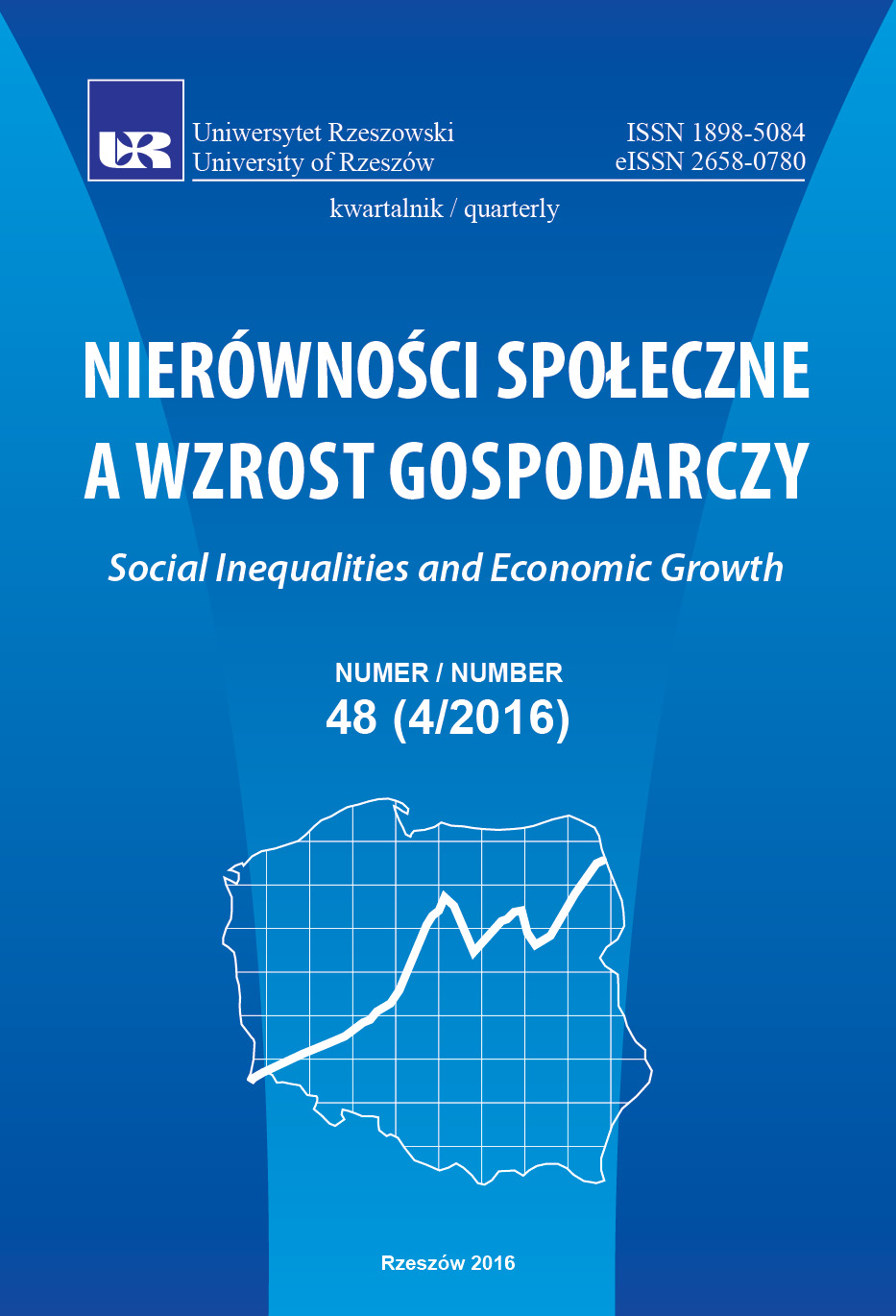Wzrost wartości i produktywności rzeczowych aktywów trwałych jako czynnik równoważenia nierówności ekonomicznych
DOI:
https://doi.org/10.15584/nsawg.2016.4.11Słowa kluczowe:
produktywność pracy, parytet produktywności pracy, aktywa rzeczowe, wzrost gospodarczyAbstrakt
Celem artykułu jest analiza wpływu stanu rzeczowych aktywów na wzrost PKB, a co za tym idzie – na rozwój gospodarczy i rosnące możliwości zatrudnienia, co prowadzi do racjonalizacji nierówności ekonomicznych. Możliwości zatrudnienia i godziwe wynagrodzenie w sensie teorii kapitału ludzkiego oznaczają osiągnięcie pozytywnego stanu gospodarki. Wskazuje się na rolę rzeczowych aktywów we wzroście produktywności pracy i wpływie na PKB. Porusza się także kwestię pomiaru wielkości aktywów, w szczególności zagadnienia procesu przenoszenia wartości do produktów, czyli amortyzacji jednocześnie wskazując metodę jej ustalania. Narzędziem analizy była teoria kosztowej funkcji produkcji i wynikającej z niej modeli, w szczególności produktywności pracy. Wskazano, że w gospodarkach słabo rozwiniętych udział pracy w PKB jest wysoki przy niskim udziale aktywów. Poruszone w artykule tematy aktywów trwałych oraz metody ustalania amortyzacji, wskazują na ich kluczową rolę w rozwoju gospodarczym mierzonym za pośrednictwem wielkości PKB i produktywności pracy. Ich udział ściśle wiążą się z niwelowaniem nierówności ekonomiczno-społecznych oraz ze zrównoważonym rozwojem gospodarczym.Downloads
Download data is not yet available.
Pobrania
Opublikowane
2020-11-13
Jak cytować
Jonkisz-Zacny, A. (2020). Wzrost wartości i produktywności rzeczowych aktywów trwałych jako czynnik równoważenia nierówności ekonomicznych. Nierówności Społeczne a Wzrost Gospodarczy, 4(48), 140–154. https://doi.org/10.15584/nsawg.2016.4.11
Numer
Dział
Artykuły
Licencja
Prawa autorskie (c) 2016 Uniwersytet Rzeszowski

Utwór dostępny jest na licencji Creative Commons Uznanie autorstwa – Na tych samych warunkach 4.0 Miedzynarodowe.


